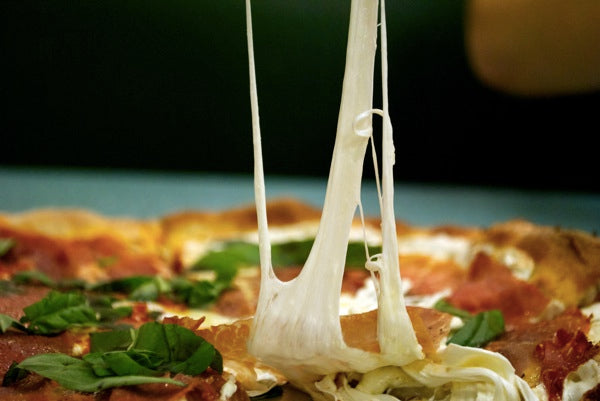The Science Behind Mozzarella - why it stretches?
Share

When starting to make your own cheese, you may wonder what causes your favourite mozzarella to stretch. Your passion for Mozzarella may drive you to think of the science behind the cheese.
Let’s start off by getting to grips with the composition of your milk.
The role of pH (acidity)
Milk is made up of spherical globules of milk fat trapped in a three-dimensional matrix of milk protein, which is called casein (or casein micelles). Most of the milk-water, along with lactose and some minerals, are removed as liquid, called whey, during cheese making.
In most milk, casein micelles are the milk proteins that contain a pH level of 6.5 and it carries a negative charge. High acidity, i.e. low PH, will result in a cheese that crumbles. Low acidity, i.e. higher pH, will result in a cheese that stretches and melts well.
Heating the milk and adding food grade citric acid to the milk help reduce the pH level to between 5.2 - 5.4, which is what you want when making mozzarella cheese. Getting your milk’s pH right at the curd stage will mean you will have a higher success rate making mozzarella when you’re get to the heat and knead stage.
As the pH level reduces, the calcium phosphate in the casein micelles dissolve and is replaced by hydrogen. This increases the stretch.
When rennet is then introduced to the milk, the rennet collapses the outer layer, or walls, of the casein micelles. This means there is nothing in between the casein micelles to keep them apart. They bind together, condense the fat cells and drain the whey, making a protein chain.
Kneading and stretching the curds help to elongate this protein chain, which causes the stringiness of mozzarella.
The stretch properties of mozzarella depend on the interactions between casein micelles. The more the casein network is interconnected, the more the cheese stretches. On the other hand, if the interaction between casein micelles is lost, the stretchability of mozzarella is decreased. The pH level and temperature play vital roles in influencing the casein interactions. Once you make curd from the milk by adding citric acid and rennet, spaces between the casein molecules are reduced. Continuous stirring, heating and acid development helps to shrink the curd particles. This in turn helps the molecules to come closer together to form what we know and love as mozzarella cheese. Getting this chemistry right is what will make or break your homemade mozzarella.